We include products in articles we think are useful for our readers. If you buy products or services through links on our website, we may earn a small commission.
Dr. Kiltz’s Three Pillars of Health and Wellness

Doctor Kiltz’s Pillars to Optimal Human Health is a holistic lifestyle regime designed to optimize your body and mind developed by Dr. Robert Kiltz, MD.
Doctor Kiltz is a fertility doctor who developed his unique approach to wellness over three decades of helping women and men overcome infertility – a diagnosis that is often a symptom as the result of specific lifestyle and dietary patterns.
Doctor Kiltz’s Pillars to Optimal Human Health is based on three main tenents of wellness, including:
- Eating High-fat low-carb whole foods — ideally, foods like fatty red meat and more found on a carnivore diet food list or Dr. Kiltz’s BEBBIS Diet. and Dr. Kiltz’s homemade keto ice cream
- Intermittent feasting (AKA intermittent fasting)–ideally one meal a day
- Regulating the nervous system with mindfulness meditation, positive psychology, and low-impact and restorative movement
Table of Contents
Pillar 1: High-Fat Low-Carb Eating
High-fat low-carb eating means dramatically reducing carbs and replacing them with fatty whole foods like:
HFLC eating protocols require reducing most processed foods, sugar, grains, pasta, bread, rice, and legumes.
Reducing your carb intake with a HFLC diet has been shown to offer numerous benefits including reducing risk of [2]:
- type 2 diabetes
- heart disease
- Acne
- PCOS
- Alzheimer’s disease and other neurodegenerative issues
There are many variations of high-fat low-carb ways of eating with carb intake ranging from 0-100 grams per day. Some of the most popular examples of HFLC eating are:
Carnivore-Inspired HFLC
For most people, Dr. Kiltz recommends a Carnivore Diet-inspired HFLC eating plan, like his very own BEBBIS Plan. The carnivore diet means eating only meat and animal products. For some, this may sound like a dream or a nightmare.
Interestingly, Dr. Kiltz’s BEBBIS plan allows for significant wiggle room/cheat days with the incorporation of french fries fried in animal fat (like duck fat) and Dr. Kiltz’s Ice Cream. For many these necessary treats make a carnivore adjacent diet much more manageable.
The carnivore diet is inspired by research showing that for most of the 2 million years of human evolution our caveman ancestors ate mostly meat [3].
Recent studies coupled with reported evidence of thousands of carnivore dieters and research into the closely related keto diet, suggests that a well-formulated carnivore diet may offer various benefits including:
- Eliminates plant toxins antinutrients and other inflammatory foods
- Weight loss
- Improved insulin sensitivity
- Protecting the glycocalyx
- Improved gut health and protection against leaky gut
- Supports heart health
- Reduced inflammation
- Supports libido and testosterone production
- Supports mental clarity
A carnivore diet eliminates exposure to numerous plant toxins that you can find on the list below:
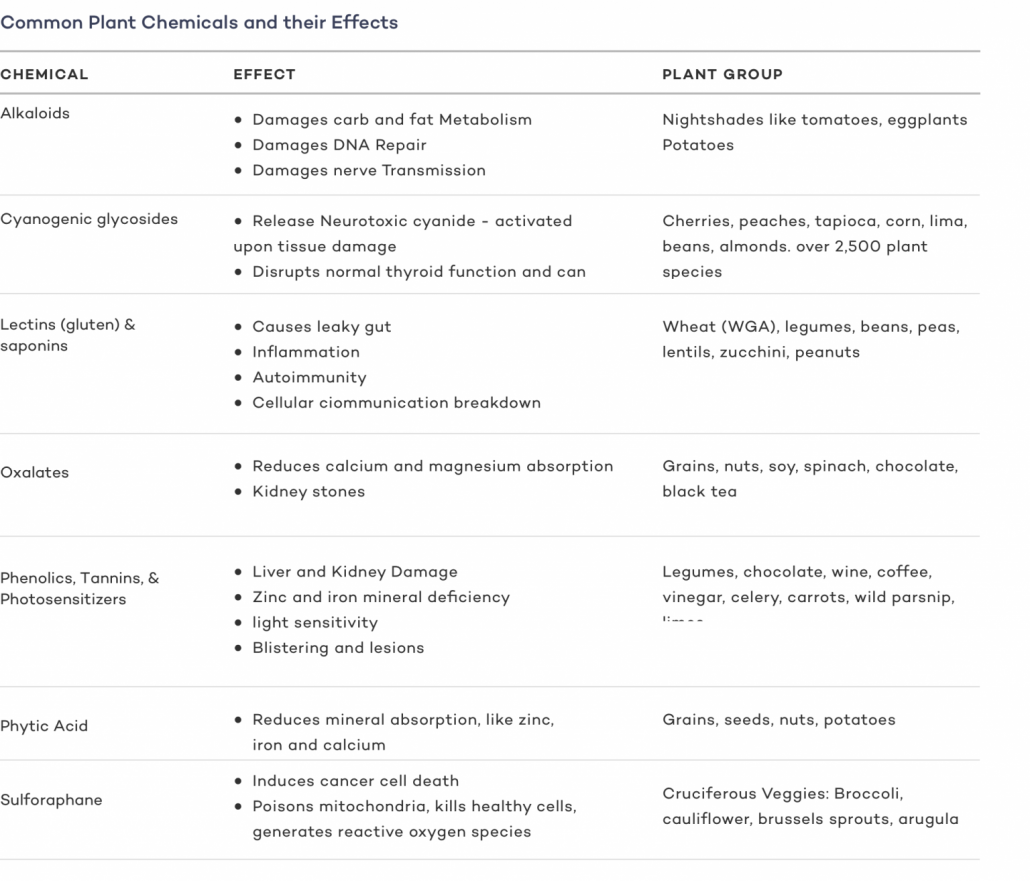
Carnivore Diet Research
Though based on ancient eating practices, the Carnivore diet is fairly new in modern culture and research is only now catching up.
In 2021 Harvard University researchers Dr. Belinda Lennerz and Dr. David Ludwig, published a remarkable study exploring how a carnivore diet affected the health of 2,029 people. 9
After the six-month trial the researchers concluded, “Contrary to common expectations, adults consuming a carnivore diet experienced few adverse effects and instead reported health benefits and high satisfaction.”
The results were overwhelmingly positive, and include:
- 93% improved or resolved obesity and excess weight
- 93% improved hypertension
- 98% improved conditions related to diabetes
- 97% improved gastrointestinal symptoms
- 96% improved psychiatric symptoms
These benefits are likely linked to:
- Eliminating processed foods loaded with sugars and irritating additives
- Eliminating grains, legumes, starches that contain lectins, phytohormones, phytoalexins and other harmful plant defense mechanisms
- Reducing excess fiber that ferments in the gut causes excess heat, inflammation, constipation, diverticulitis, and IBS
- Reducing inflammatory polyunsaturated fatty acids (PUFAs) found in seed oils, replacing them with healthy monounsaturated and saturated fats from animal foods
- Increasing intake of the healthiest food in the world including fatty cuts of steak, nutrient-dense superfoods like beef liver, salmon roe, and other organ meats
Click on these links to check out carnivore diet meal plans, and a complete carnivore diet food list
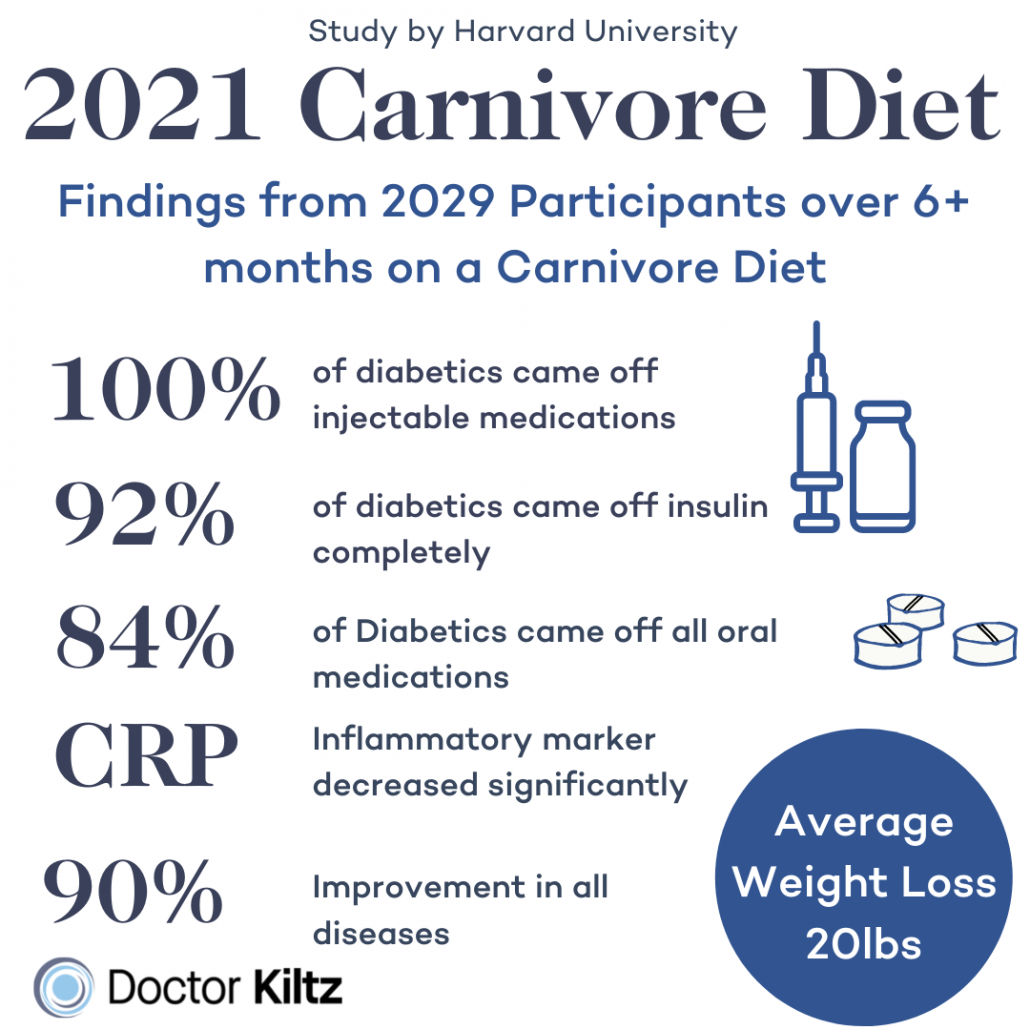
Pillar 2. Intermittent Feasting (Fasting)
Intermittent fasting, or more accurately “feasting” as Dr. Kiltz calls it, is another feature of hunter gatherer ancestors that help us optimize our health and wellness.
For the hundreds of thousands of years when our ancestors had to kill what they ate, they could only eat it fresh–so they feasted. Then fasted between successful hunts.
Over the eons our ancestors whose brains and bodies functioned the best in fasted states were the best at hunting, gathering, and ultimately surviving and reproducing.
We are their offspring and share their genetic heritage.
The physiological adaptations for feast-and-fast cycles are evident in the way our own bodies [5]:
- easily store fat: Fat is the fuel supply that we rely on between successful hunts
- easily enter the state of ketosis: This is the process our bodies uses to use fat from food and the fat stored on our bodies to feel the majority of our cells
Research suggests that our brains are hard-wired to function optimally during times of food scarcity and that our cognitive ability diminishes when we don’t fast [6].
Intermittent fasting research show that mimicking this ancestral fasting/feating eating pattern can offer numerous health benefits including[7][8][9][10][11][12]:
- fat burning and weight loss
- Restoring gut health
- Blood sugar regulation
- cholesterol and triglycerides control
- Supports hearth health
- increased lean muscle mass
- Stimulates human growth hormone
- Stem cell production
- supports mindful eating habits
Intermittent Feasting Methods: OMAD
There are numerous intermittent fasting methods, and they all can be effective. However, according to Dr. Kiltz, the most ideal method is known as OMAD (One Meal a Day).
This way of eating calls for consuming all of your calories in a one hour window. It becomes critical to center your meals around nutrient-dense foods that will meet your caloric and nutrient needs. This OMAD meal plan can point you in the right direction–i.e. towards ribeye steak.
It’s recommended that on OMAD you place your eating window at either mid-day, or in the early evening, but not so late that it interferes with digestion before bed.
Eating during the day or at sundown will also alow you to take advantage of the benefits of circadian rhythm fasting.
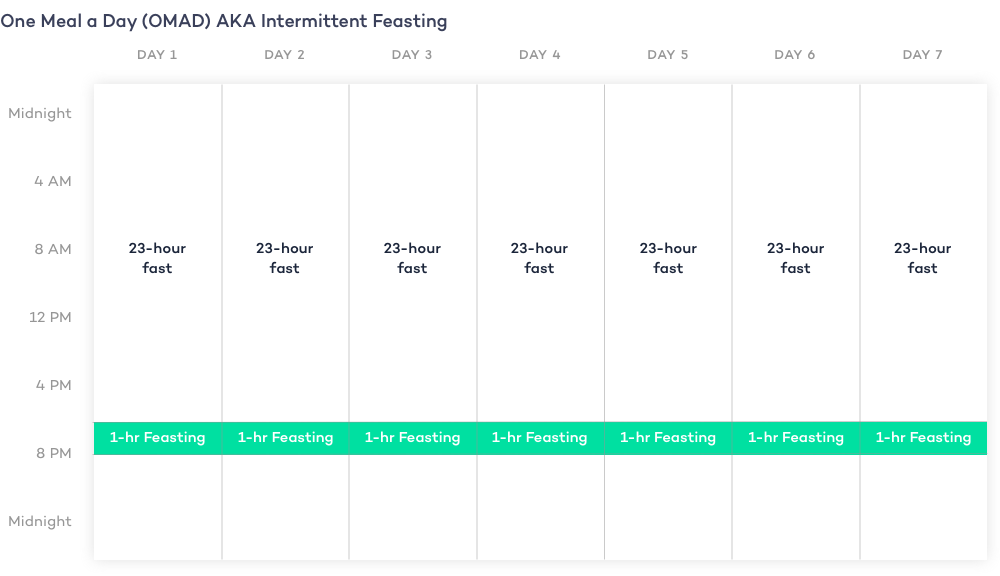
3. Nervous System Regulation with Meditation, Movement, and Creativity
In stressful situations, your body responds by entering into flight and flight modes. Fight and flight are signs that your sympathetic nervous system has been activated. This causes your blood pressure and heart rate to increase, muscles to constrict, digestion to shut down, and the release of stress hormones like cortisol, adrenalin, and noradrenaline.
Fight and flight modes are here to help us survive, but if they are chronic they can wreak havoc on our body causing chronic inflammation, eating disorders, psychosis, and various other ailments.
Over the eons humans have instinctively developed ways to regulate the nervous system. This means bringing it back into a state of rest, relaxation, and digestion.
Some of these practices are housed in religions, and others in positive psychology, and modern activities.
Let’s take a look at some of the key practices of Dr. Kiltz’s Doctor Kiltz’s Pillars to Optimal Human Health.
Mindfulness Meditation
Mindfulness is a type of meditation where you intentionally bring your awareness to the things you’re experiencing in the moment.
Depending on the specific mindfulness exercise these objects of awareness might be your breath, the image of someone you care about, the sounds around you, and your body sensations
Practicing mindfulness meditation has been shown to offer numerous health benefits including:
- Reduced stress [1]
- Reduced anxiety levels. [2]
- Less depression
- Increased awareness of your habitual ways of thinking and an ability to build more constructive habits. [3] [4] [5]
- Greater creativity in problem-solving skills. [6]
- Elevated attention and memory. [7]
- Improves age-related memory loss. [8]
- Increases in attention, memory, and mental quickness in older people. [9]
- More compassion toward yourself and others. [10]
- Increased control over food cravings. [11]
- Increased control over alcohol cravings, and alcohol use. [12]
- Improves sleep. [13]
- Reduction in physical pain. [14] [15]
- Reduced blood pressure. [16]
- Reduced inflammation. [17]
- Reduced severity of numerous disorders and diseases including irritable bowel syndrome, post-traumatic stress disorder, and fibromyalgia. [18] [19] [20]
Click here for tips on how to bring mindfulness practices into daily life.
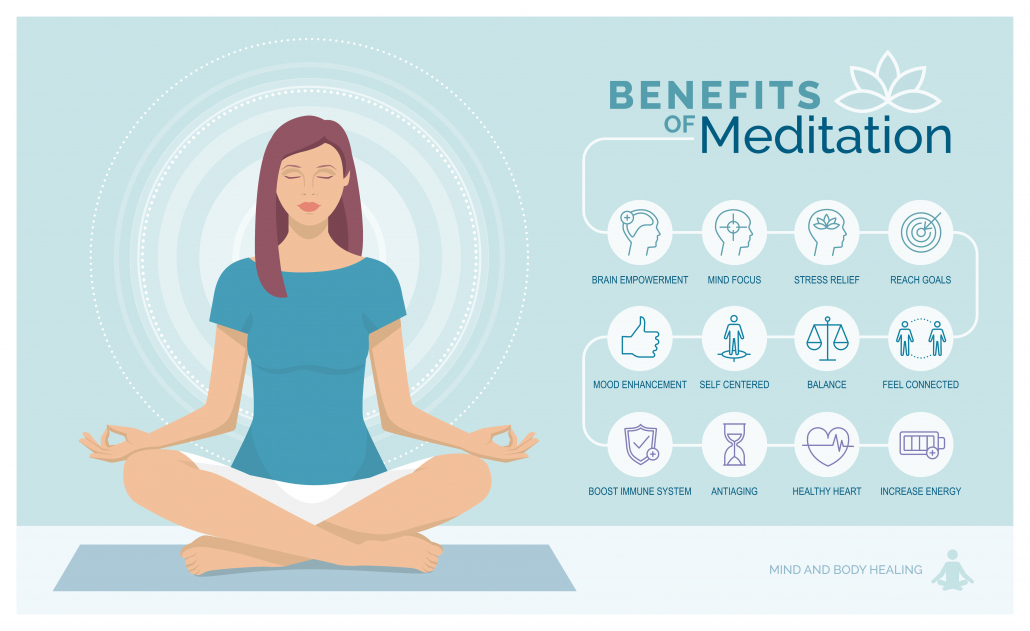
Daily Intentions
Daily Intentions are ways of creating greater satisfaction in every moment of your life.
Simply saying, “I deserve to feel good” can help you short-circuit self-shaming cycles that keep you stuck in patterns of feeling bad about yourself.
“This week I will reflect rather than ruminate!” is a powerful intention that can help you stop replaying old thoughts about mistakes and what went wrong over and over again.
Reflecting means looking for insights and corrections that can help you do better next time.
Ruminating leads to shame and feeling stuck. Reflecting leads to hope, improvement, and self-confidence. Start reflecting by asking, “What do I want to feel about this situation?”
Then ask, “what steps can I take to get me to that feeling?”
Daily intentions break patterns that are no longer serving us and help us create new patterns of self-perception and experience that result in more joy and satisfaction.
Gratitude Practices
Gratitude practices are ways to cultivate a state of thankfulness and appreciation that resounds through your life. [1] Everyone can feel gratitude– like feasting and fasting, gratitude is also a part of our evolutionary endowment. It’s “hardwired” in the human brain. [2]
Researchers have found that practicing gratitude requires two steps. Step is “recognizing that one has obtained a positive outcome” and (2) “recognizing that there is an external source for this positive outcome.” Then comes putting that recognition into words and deeds, like keeping a gratitude journal, or expressing gratitude to the people around you, and doing gratitude meditations.
Consistently practicing gratitude offers many benefits that are reflected in structural changes in the brain. [1]
Practicing gratitude offers numerous benefits including:
- increases positive emotions. [2]
- strengthening the immune system. [3]
- improves sleep. [4]
- increases self-esteem. [5]
- Produces more and higher quality relationships. [6]
- Helps maintain other self-care routines like yoga and healthy eating. [7]
- increases productivity and satisfaction in the workplace. [8] [9]
Here you can find 3 proven techniques for practicing gratitude in your everyday life.
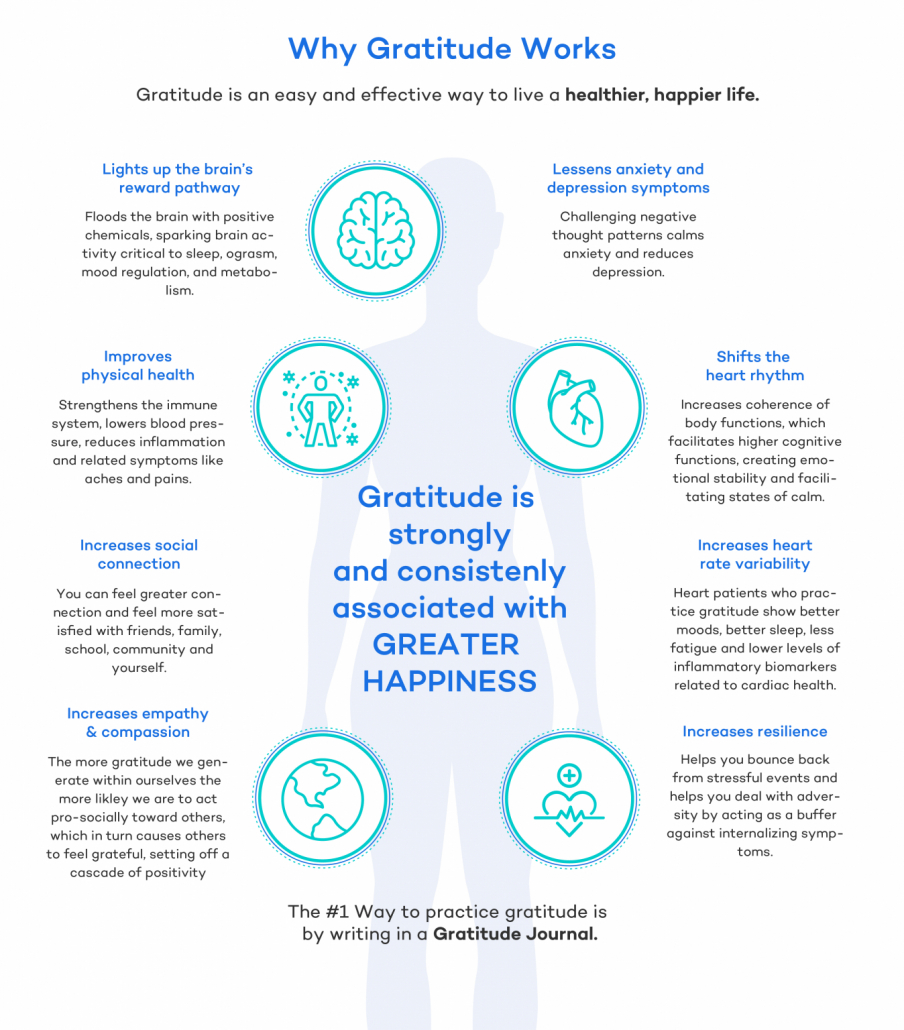
Pillar 3. Low-Impact Movement and Plenty of Rest
As we touched on earlier, our hunter gatherer ancestors rested as much as possible, and they certainly weren’t doing CrossFit. Their main source of exercise was walking–around 10km a day, with a few periods of running after prey.
When practicing Doctor Kiltz’s Pillars to Optimal Human Health, low-impact restorative movement looks like:
Just as important as movement is rest. Our bodies need time to digest, heal, and release pent-up nervous system energy. Though getting good sleep is critical to health, hobbies like pottery, reading, and fishing are great ways to release stress and relax your mind.
Dr. Kiltz’s Personal Regimen
Doctor Kilt’z long days are physically and mentally demanding. He’s on his feet from morning until night conducting consultations, surgeries, and coordinating with doctors and nurses at his 9 clinics across the U.S. and Canada. Yet his patients and colleagues know him as remarkably energetic and generous of spirit. How does he do it?
Start with a Positive Affirmation and Coffee
Dr. Kiltz’s day starts at 5 am with a daily affirmation and a cup of coffee: “Thank you, God, for this awesome and amazing day you have gifted me.” Doctor Kiltz says, if the word ‘God’ doesn’t resonate with you, try ‘universe’, or ‘existence’.
The point here according to Dr. Kiltz, is that “every day you wake up, you are the artist painting the masterpiece of your single, precious life. Gratitude is the feeling that arises when you realize the blessing of being you, right now, just as you are!”
Spend the Day on Your Feet
After that it’s right into consultations and surgeries, another cup of coffee at 10 am, and nothing to eat until the evening.
Spending the day on your feet brings the healthy habits of our hunter gatherer ancestors into modern life. Research shows that hunter gatherers who have extremely low incidences of modern diseases like diabetes and heart disease walk an average of 10 km per day [1]. If you’re counting steps this comes to around 12,500 steps per day.
Eat (OMAD) One Meal A Day
Dr. Kiltz practices the OMAD (One Meal A Day) approach to intermittent “feasting”, consuming all of his calories in one large meal. Usually this meal is centered around a large, fatty, ribeye steak.
OMAD is another approach to bringing the lifestyle habits of our hunter gatherer ancestors into the present, and reaping their benefits.
OMAD frees up time and space for focusing on personal interests and work, while giving the digestive system time to rest and regulate between meals. OMAD corresponds with the ancient cycle of feasting on fresh meat after a successful hunt, then fasting in between.
Dr. Kiltz’s OMAD menu looks like this:
- Fatty grass-fed ribeye steak almost every night
- Duck liver 2-3 times per week
- French fries fried in duck fat once or twice per week
- Dr. Kiltz’s homemade keto ice cream 2-3 times per week
- Grass-fed beef organ meat supplements
Hobbies and Movement
On his off days, Dr. Kiltz writes about his lifestyle discoveries, holds interactive chats with patients and fans, paints, and sculpts pottery. His pottery has led many patients and colleagues to refer to him as the “Pottery Doctor”.
Dr. Kiltz also bikes, walks, swims, and stretches, but never in excess. He observes that our ancestors rested as much as possible. Walking was their main form of activity. Down time was devoted to artistic creation, spiritual exploration, and social bonding which involved dancing from time to time.
Let’s take a closer look at each of these pillars of Doctor Kiltz’sDoctor Kiltz’s Pillars to Optimal Human Health.
Dr. Kiltz’s Pillars to Optimal Human Health: The Takeaway
Doctor Kiltz’s Pillars to Optimal Human Health is a holistic approach to wellbeing that takes into consideration the deep connection between the mind and body.
The approach seeks to optimize health and wellness by integrating what we eat and when we eat with cognitive and physical practices that release stress, create mental clarity, undo maladaptive emotional patterns, and bring joy and satisfaction to our lives.
Dr. Kiltz’s three pillars of health and wellness include:
- High-fat low-carb eating
- Intermittent Feasting
- Nervous system regulation with meditation, positive psychology, and low-impact movement




















